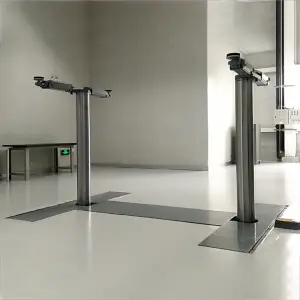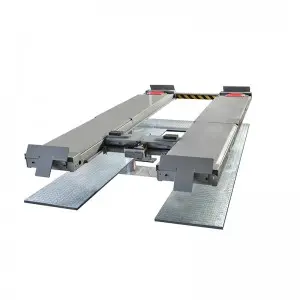
Enhancing Home Convenience and Safety: The Benefits of Installing an Inground Lift for Accessibility and Mobility
In today’s fast-paced world, the convenience and accessibility of our homes are more important than ever. For individuals with mobility challenges, an accessible environment can dramatically improve their quality of life. One innovative solution that has gained traction is the installation of an inground lift. This article will delve into what an inground lift is, how it works, its benefits, and considerations for installation, offering insights into this impressive and practical home improvement option.
Understanding Inground Lifts
An inground lift, also known as a vertical lift or platform lift, is a system designed to transport individuals from one elevation to another, typically installed in a home to bridge multilevel spaces such as a staircase or a patio leading to a backyard. Unlike traditional lifts that sit above ground, inground lifts are integrated into the floor, providing a sleek and unobtrusive design that maintains the aesthetic of the home while ensuring safety and convenience.
Inground lifts operate using hydraulic or mechanical systems that enable smooth elevation and descent. These lifts can vary in size, capacity, and design, allowing homeowners to select an option that best suits their needs, whether for personal use or for guests with mobility limitations.
The Benefits of Inground Lifts
1. **Improved Accessibility**: The most significant advantage of installing an inground lift is enhanced accessibility for individuals with mobility challenges. Whether someone uses a wheelchair, a walker, or simply has difficulty navigating stairs, an inground lift provides seamless access to all levels of the home. This accessibility empowers individuals to maintain their independence and enjoy their living spaces without the constant worry of navigating stairs.
2. **Space Efficiency**: An inground lift is designed to save space and minimize the footprint required for installation. Because it is built into the ground, it occupies less visual space compared to traditional stairlifts. Many designs are customizable and can blend seamlessly with your home’s architecture, maintaining an uncluttered look.
3. **Safety Features**: Safety is a primary concern for individuals with mobility issues. Inground lifts often come with safety features such as automatic doors, safety rails, and non-slip surfaces. Moreover, these systems minimize the risk of falls that can occur with stairs, making it a safer alternative in a multi-level home.

Enhancing Home Convenience and Safety: The Benefits of Installing an Inground Lift for Accessibility and Mobility
4. **Increased Property Value**: Investing in an inground lift can increase your home’s value. As accessibility becomes a crucial factor in home buying, having a functional lift can make your property more attractive to prospective buyers, particularly those with mobility issues or families planning for the future.
5. **Versatility**: Inground lifts are versatile and can serve various purposes beyond basic transportation. They can be used to transport heavy items, making tasks such as moving groceries or furniture between levels easier. This flexibility adds to their appeal in a home setting.
6. **Enhanced Home Aesthetics**: Modern inground lifts come in various designs and finishes, allowing homeowners to choose options that best match their interior decor. Many models can be installed without compromising the appearance of your home, enhancing its overall look while providing essential functionality.
Considerations for Installation
Before installing an inground lift, there are several vital considerations to keep in mind:
1. **Space Requirements**: Ensure that your home has enough space for the lift to be safely installed and operated. Consult with professionals to evaluate the necessary structural modifications.

Enhancing Home Convenience and Safety: The Benefits of Installing an Inground Lift for Accessibility and Mobility
2. **Permitting and Regulations**: Check local building codes and regulations that may govern the installation of inground lifts. Obtaining the proper permits is crucial to ensure compliance and safety.
3. **Cost Factors**: While inground lifts are a substantial investment, consider the long-term benefits and potential return on investment. Prices can vary significantly based on the model, installation costs, and customization options.
4. **Professional Installation**: It’s essential to collaborate with an experienced contractor or lift manufacturer for installation to guarantee safety, proper functioning, and adherence to local regulations.
Conclusion
Investing in an inground lift not only enhances the accessibility of your home but also provides safety, convenience, and versatility. As more individuals prioritize inclusive living environments, these lifts stand out as a practical solution that caters to a broad range of mobility needs. By considering the various benefits and consulting with professionals regarding installation, homeowners can create a more accessible, safe, and functional living space for themselves and their loved ones.New Engery Vehicle Battery Lift




